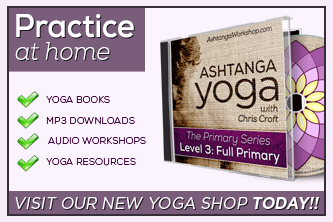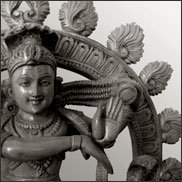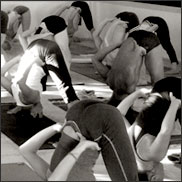Breathing Correctly
Breathing (pranayama) is the heart of ashtanga yoga, and breathing correctly is at the core of our search for health, wellness, contentment and peace.
“When the breath wanders the mind also is unsteady. But when the breath is calmed the mind too will be still, and the yogi achieves long life. Therefore, one should learn to control the breath”
~ Hatha Yoga Pradipika ~
Everyone knows that breathing is essential to life, but few of us are aware that our body is designed to breathe in a very specific way in order to maintain balance within our system. As babies we all naturally knew how to breathe properly, but for various reasons a great many of us adopted poor breathing habits in adulthood. These counterintuitive breathing techniques create unnecessary stress within our system and directly affect our physical, emotional and mental wellbeing. The immune, circulatory, endocrine and nervous systems are all adversely affected by improper breathing habits and can cause symptoms such as dizziness; numbness; anxiety and panic attacks; chest pain; digestive problems; an irritable bowel; neck, back and shoulder pain. All of which can be helped by learning to breath in a way that your body would prefer.
Breathing is our most important act – we do it every moment of our lives, some 20,000 times each day. Breathing incorrectly can produce tension, exhaustion and vocal strain, and encourage aches and illnesses. Breathing correctly however improves focus and concentration; eliminates harmful toxins; strengthens the immune system; increases metabolism, aiding in digestion and weight loss; reduces stress, tension and anxiety; fuels energy production; revitalises organs, cells and tissues; stimulates the body’s natural ability to heal and lowers blood pressure.
One of the first things yoga teaches us is how fundamental breathing is to our health. In many languages "to breath" has the same basic root as the word Soul, Spirit, and Essence. Part of the intelligence of the vinyasa system is that each specific movement facilitates a full and healthy breath.
The Full Diaphragmatic Breath
The key to breathing correctly and in a way that promotes health and wellbeing is in how we use the diaphragm. In a full natural breath the first movement that occurs is the lowering of the diaphragm down into the belly. This has the effect of creating negative pressure in the lungs which draws air through nose into the base of the chest cavity. Eventually the diaphragm will not lower any further and the ribcage is required to expand outwards to the back and sides of the body to increase the capacity of the lungs. The final movement, which enables the lung to inflate to their maximum capacity, is the expanding of the chest upwards and outwards.





